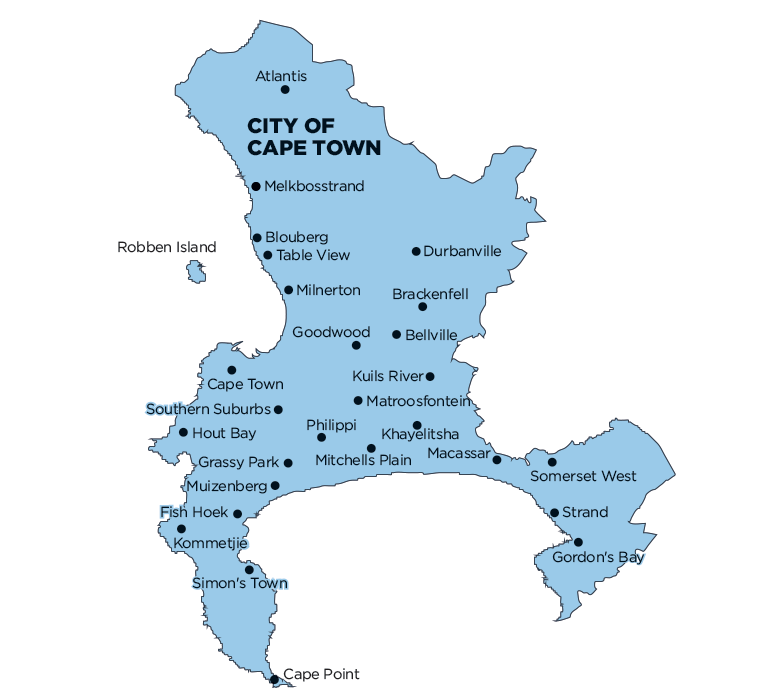
Geography, History & Economy
MDB code: CPT
Description: The City of Cape Town Metropolitan Municipality is a Category A municipality and is situated in the southern peninsula of the Western Cape Province. It has a coastline of 294km. It stretches from Gordon’s Bay to Atlantis and includes the suburbs of Khayelitsha and Mitchells Plain.
The municipalities adjacent to it are Swartland and West Coast to the north; Drakenstein, Cape Winelands and Stellenbosch to the north-east; and Theewaterskloof, Overberg and Overstrand to the south-east. It is also bounded by the Atlantic Ocean to the south and west.
The City is South Africa’s second-largest economic centre and second most populous city after Johannesburg. It is the provincial capital and primate city of the Western Cape, as well as the legislative capital of South Africa, where the National Parliament and many government offices are located.
The City is famous for its harbour, as well as its natural setting in the Cape Floral Kingdom, including such well-known landmarks as Table Mountain and Cape Point. It is hailed as one of the most beautiful cities in the world as officially recognised by Forbes. It is also Africa’s most popular tourist destination. Being the oldest city in South Africa, it is affectionately known as ‘The Mother City’.
Area: 2 446km²
Cities/Towns: Athlone, Atlantis, Belhar, Bellville, Blackheath, Blouberg, Blue Downs, Brackenfell, Cape Point, Cape Town, Delft, Durbanville, Elsies Rivier, Fish Hoek, Goodwood, Gordon’s Bay, Grassy Park, Guguletu, Hout Bay, Khayelitsha, Kommetjie, Kraaifontein, Kuils River, Langa, Macassar, Matroosfontein, Melkbosstrand, Milnerton, Mitchells Plain, Muizenberg, Noordhoek, Nyanga, Parow, Philadelphia, Philippi, Robben Island, Scarborough, Simon’s Town, Sir Lowry’s Pass, Somerset West, Southern Suburbs, Strand, Table View
Main Economic Sectors: Finance and business services (36.1%), manufacturing (16.1%), trade and hospitality (15.6%), community services and general government (15.0%), transport, storage and communication (11.2%), construction (4.1), electricity (1.1%), agriculture (0.7%), mining (0.1%) – Source IDP 2015/16
